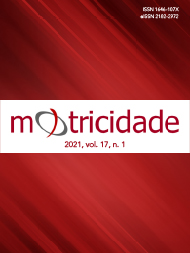Adolescent obesity facts
DOI:
https://doi.org/10.6063/motricidade.23402Resumo
Obesity prevalence through childhood and adolescence has been classified as a serious public health problem noting a worldwide increase in the prevalence of overweight/obesity and therefore different etiologically related diseases. In developed countries, current prevalence levels reach 23.8% in boys and 22.6% in girls, with Portugal showing high prevalence values like other southern European and the Mediterranean countries (WHO, 2017).
Not only for the health of the present generation of young adolescents but also for future adult’s populations, the need to find better multi-sectoral strategies for current public policies appears to be fundamental. Although it is not the main scope of this text, it will be important, in due course, to analyse the effectiveness of the current inter-sectoral health policies applied in some countries, although it is clear that no country until now has been able to definitively reverse this phenomenon.
Our main purpose of this research note is to present the preliminary results of the Causes4adolescentObsesity (C4AO) project, which included a sample of 603 students from the northern and central interior region of Portugal.
Downloads
Publicado
Edição
Secção
Licença
Os autores dos manuscritos submetidos para publicação deverão ceder, a título integral e permanente, os direitos de autor (copyright) à revista Motricidade e às Edições Desafio Singular. A cedência de direitos de autor permite a publicação e divulgação do artigo em formato impresso ou eletrónico e entrará em vigor a partir da data de aceitação do manuscrito. Os autores concedem, ainda, os direitos para a revista Motricidade utilizar e explorar o respetivo artigo, nomeadamente para licenciar, ceder ou vender o seu conteúdo a bases de resumos/indexação ou outras entidades.
Nos termos da licença “Creative Commons”, os autores poderão reproduzir um número razoável de exemplares para uso pessoal ou profissional, mas sem fins comerciais. Nos termos da licença SHERPA/RoMEO, os autores poderão, ainda, disponibilizar/arquivar uma cópia digital final (versão postprint) do artigo no seu website ou no repositório científico da sua instituição.

